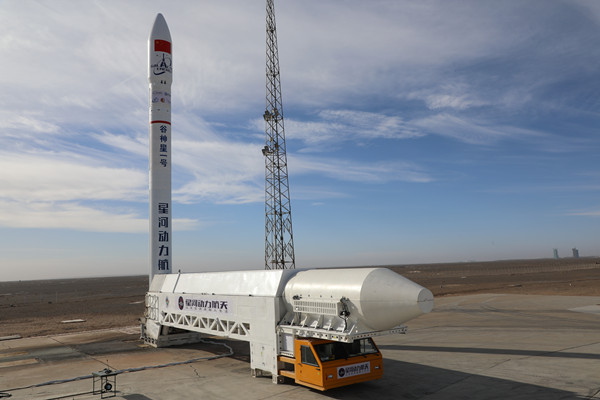New satellite launches at Dongfeng site in Alshaa League
- Updated: 2023-01-12

The Alshaa-1 satellite is made ready for launch in Dongfeng Aerospace City on Jan 9. [Photo provided to chinadaily.com.cn]
The 13th Alshaa-1 satellite for China's Apocalypse Constellation communications network was successfully launched by a Ceres-1 rocket recently from Dongfeng Aerospace City – in Alshaa League, in North China's Inner Mongolia autonomous region.
It entered its predetermined orbit on Jan 9, with the launch pronounced as a success.
The satellite is an integral part of the Apocalypse Constellation network planned and developed by Beijing Guodian Hi-Tech Co.

The satellite is carried aloft by a Ceres-1 rocket on Jan 9. [Photo provided to chinadaily.com.cn]
The Apocalypse Constellation is a commercial internet of things communications system based on low-orbit, small satellites. These can meet the needs of users in multiple industries and fields – in aviation, forestry, earthquake monitoring, water conservation, environmental protection, meteorology, oceans and for other applications.
Alshaa-1 is composed of a satellite platform, payload and separation mechanism and the mass of the satellite weighs 46 kilograms. The satellite is loaded with a DCS payload that can provide data collection services on a global scale and effectively solve ground network coverage and IoT network access problems in the sea, air and in remote areas.
Last December, Alshaa League signed an agreement with Beijing Guodian Hi-Tech Co to jointly name and launch the satellite.
With its launch, the satellite will serve among other things to monitor Alshaa's ecosystem and environment. It will assist with natural disaster early warnings, smart agriculture, new energy monitoring and with smart cities - and promote high-quality local economic and social development.


